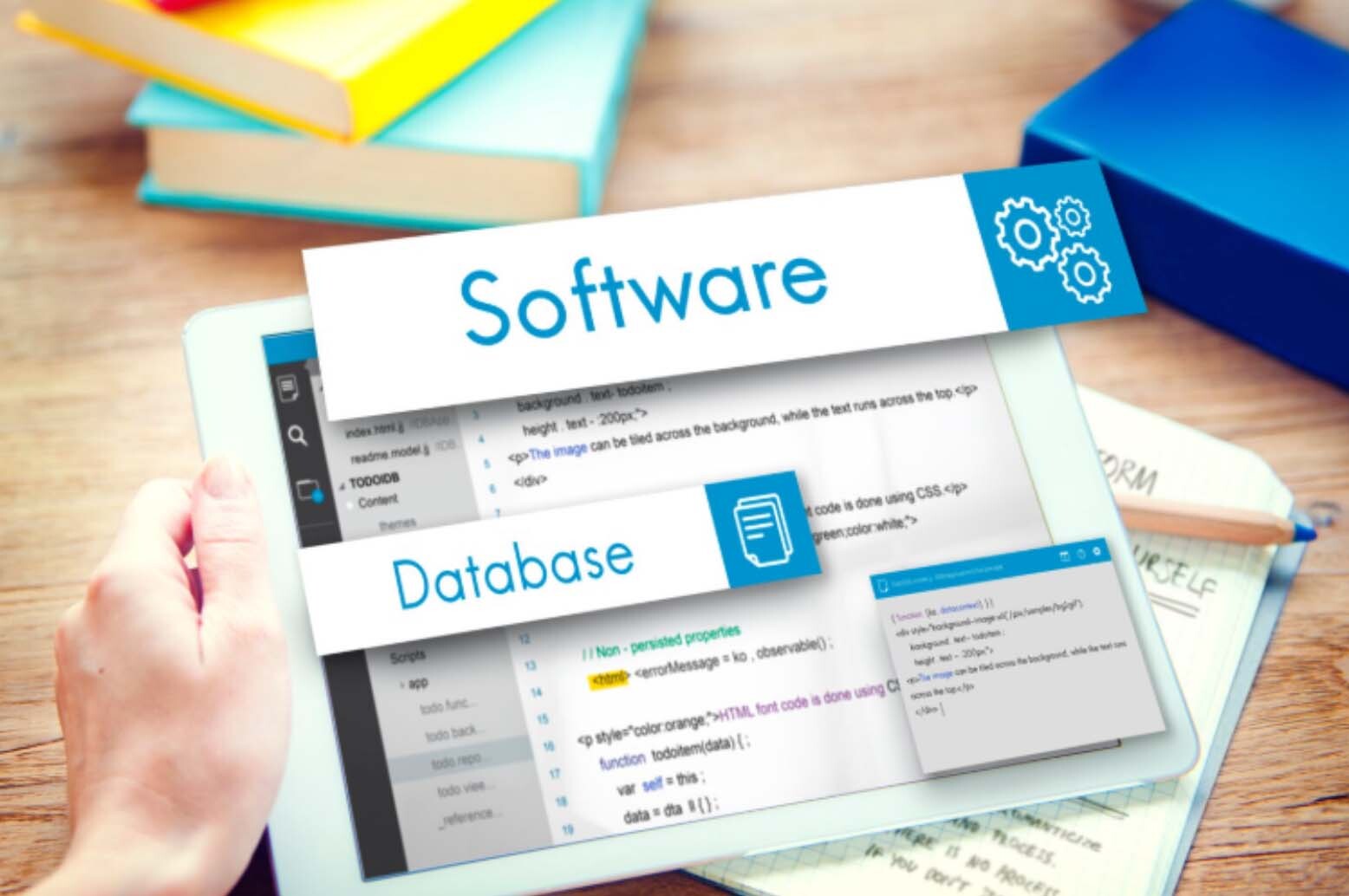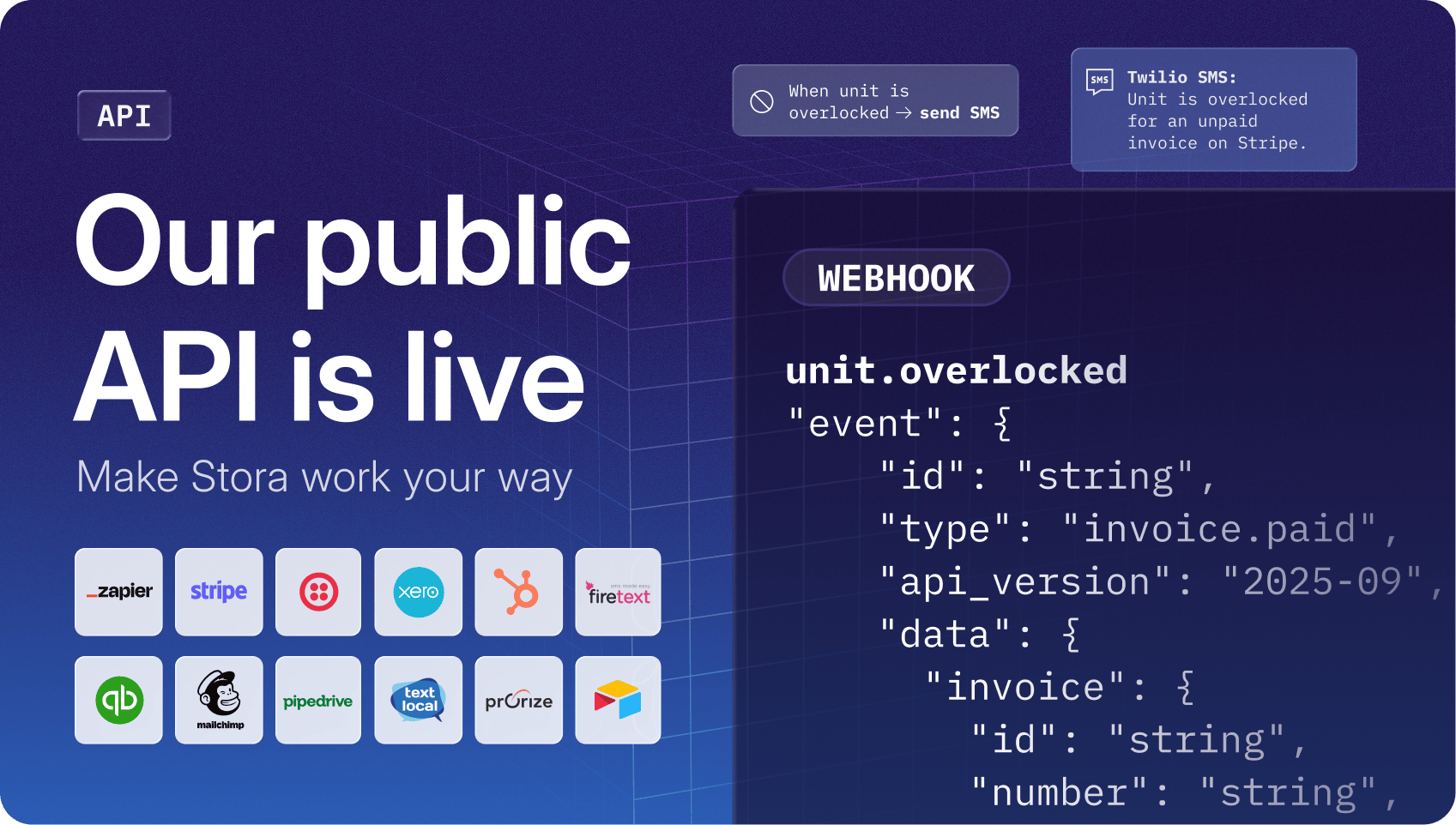Self storage management software is essential to your business. Software keeps every aspect of your operations organized and efficient.
Without the right tools, tasks like billing, rental management, and customer communication can quickly become time-consuming and error-prone.
High-performing self storage facilities prioritize features that make daily operations seamless.
User reviews show that electronic payments are critical, with 99% rating them highly important. Customer management follows closely at 98%, alongside billing, invoicing, and recurring billing, all rated by 98% of users.
The best self storage software delivers on these essential features and can help you save time, reduce errors, and ensure your customers have a smooth experience every time they interact with your facility.
In this guide, we’ll unpack eight important questions to consider when you’re in the process of selecting software for your self storage business.

Questions to Ask When Choosing Self Storage Software
Below are eight key questions you should ask vendors when choosing self storage management software, and why they matter.
They’ll help you compare solutions more knowledgeably and ensure that you pick a modern solution that can help you build and run an efficient business, scale effectively, and meet future challenges.

How does self storage software help me find customers?
The ability to attract new customers is just as important as managing existing ones. But traditional self storage software often assumes you already have a website in place. Many operators end up relying on generic website builders like WordPress or Wix, which aren’t designed with self storage customer acquisition in mind.
Templates are generic and not tailored to the unique needs of storage businesses, and advanced functionality often requires costly customisation.
Without professional help, it can be easy to make design or performance mistakes that slow your site down, which can negatively impact your search engine rankings and online visibility.
This is especially important, as more than 70% of people looking for storage units use online searches.

What you should look for instead is software that includes built-in tools to help you generate leads and convert them into paying customers. Look for an integrated website designed specifically for self storage, with online booking and payment functionality, and features that make it easy for prospects to find and reserve a unit in just a few clicks.
Modern self storage management software will provide you with a super-fast-loading website that Google will love and rank higher in search results.
This means the higher you rank, the more potential customers visit your site, which means more leads, sales, profits, and a successful business.
The best self storage software is designed to highlight the information customers need most, like unit availability and sizing, as well as your pricing and payment methods. This makes it easier for them to choose a unit and complete a booking.
And it will be optimized for turning visitors into customers. All of the specialist web performance, UX, and functionality will already be built in, strategically designed for the needs of self storage owners and customers. So all you need to do is add text and images.

How does it help me sell to customers?
Traditional software will answer this with a significant emphasis on its customer relationship management (CRM) system.
A CRM system is designed to help teams efficiently follow up on leads by letting them assign a salesperson, add notes to a lead, and set alerts and reminders. This feature is an important part of these older solutions because their clients are still carrying out sales manually.
Modern software recognizes that the best way to convert a website lead into a customer is by making it incredibly easy for them to book and pay instantly online.
For this reason, it will offer self-service customer experiences by default, enabling visitors to book self storage units and add their recurring digital payment method themselves, from credit cards to direct debits.
If these sales experiences are professionally designed and optimized, the conversion rate from website visitor to paying customer should be high.
If your vendor offers an integrated website process, you should ask for data showing their conversion rates. For example, operators using Stora’s self storage software average over 3% conversion compared to an industry average lead conversion rate of just 1.5%.
⚠️ A Warning: Watch out for online booking and payment processing flows that ignore best practices for online conversions. Introducing any friction before you get the customer past the first big conversion event, which is entering payment details, will lower conversion rates and lead to lower sales and higher staff costs. For example, a booking flow that asks customers to upload ID and sign contracts before adding payment details will kill conversions. |
A modern platform will also include live chat, either built in or via integration, so you can answer questions in real time from your phone while that lead is still on your website.
And while a modern solution will include CRM features, these will be heavily automated so the software is doing the heavy lifting, including customer emails, texts, and staff reminders.
How does it help me automate my business?
Traditional software will offer basic automations to reduce administrative effort for a few repetitive everyday tasks, such as:
Creating and sending invoices to customers.
Connecting to a payment processor to process payments on your behalf.
Connecting to smart entry systems that allow your customers to get codes for their unit’s door.
However, be sure to ask your salesperson whether these tasks are truly automatic or if they require initiation first.
With older software, you often have to log in and manually trigger tasks, like sending invoices or updating unit availability, rather than having them run automatically in the background.
You may need to do this multiple times each day, depending on the platform, the size of your self storage facility, and the volume of sales and billing activity you’re generating. This can be time-consuming and adds delays for your customers.
Modern software will automate all of this much more, but in a hands-free way where you don’t have to do much yourself. Here are some of the most impactful time-savers you should expect to see in a state-of-the-art solution:
Payment collection
The right self storage software will automate the collection of payments using pull payment methods, as opposed to relying on customers to send money to you manually each time.
Reconciliations
The software will automatically reconcile payments against invoices, ensuring your accounts are accurate and up to date. Automated reconciliation also helps identify discrepancies quickly, making it easier to resolve issues before they affect your cash flow.
Missed payments
When a payment fails, solid self storage software will automatically retry the payment repeatedly over a set period, like eight times over two weeks, so you rarely need to get involved in chasing missed payments.
It can also automatically collect and update expired customer card details, so missed payments don’t happen in the first place.
These two features can significantly reduce the number of debtors in your client base. For example, the average operator using Stora’s self storage software has up to six times fewer debtors than the industry average, resulting in a 2%–3% revenue boost.
Data entry
A modern self storage platform will connect the website’s bookings and payments system directly to the management software so that customer contact and payment details are automatically synced, and staff don’t have to re-enter them manually.
Self storage unit allocation
The right self storage software will let you set rules that control how the tool automatically allocates units, enabling customers to book, pay, pass ID checks, sign a contract, and move in without any effort from you or any of your staff.
Accounting automation
The best management software will automate your accounting by running reconciliations and creating the necessary accounting entries for you, rather than you spending hours each week manually copying invoices into your accounting platform.
As a benchmark, self storage operators using Stora finish their accounting in less than 30 minutes per month.
Smart pricing
It can automatically adjust your prices based on the remaining availability in your facility or in line with supply and demand in your area.
Sales follow-ups
A good software platform can automate reminders and incentives for leads who haven’t completed their booking, helping turn interested prospects into paying customers. Automated follow-ups can include emails, text messages, or special offers, reducing the need for staff to manually track each lead.
Move out management
Self storage property management software can automate the move-in and move-out process, including notifying you when the unit has been left empty and cleaned.
Some older software products can work alongside third-party web booking systems. But these are separate products that aren’t integrated, and they vary hugely in quality.
While using these solutions side by side can solve some issues and make it easier to transact online, the experience, flexibility, and power can never match a software product where the website, eCommerce, facility management, and pricing have been designed together from the ground up.
How can it help me automatically grow sales over time?
Traditional software doesn’t typically get involved in the direct-to-customer sales process.
More importantly, traditional self storage software charges on a per-unit basis. This may sound appealing initially due to predictable costs.
However, it means they have no incentive to help you grow sales, as they’ll get paid even if your units are sitting vacant.
Self storage facility management software will be much more focused on helping you grow sales over time, and this will be obvious from their pricing structure.
For example, the provider may charge you a variable percentage revenue fee so that their success is tightly connected to your success, and their self storage software grows only when yours does.
This is how we do it at Stora, and this model is what keeps modern providers like us laser-focused on planning, prioritizing, designing, and releasing new functionality that helps you to grow.
In addition to some of the automations mentioned in the section above, some features to look out for include:
Automated price increases for existing storage tenants.
Travel-style upselling at checkout. For example, pay extra for a unit near the front door or upgrade your insurance.
The ability to charge customers extra for additional contract flexibility.
Does it help me minimize security and compliance risks to the business?
Traditional self storage software may digitize and store your team’s risk management evidence, but it won’t proactively help you prevent risk.
For example, to protect themselves, self storage operators need to verify who the customer is and ensure they agree to the facility’s terms and conditions.
Older software expects facilities to ask every customer to bring ID documents into the office where staff photocopy them, and to appear in person to sign contracts. This is time-consuming for both staff and customers.
The platform may offer document scanning and uploading to your tenant’s profile in the CRM, but it doesn’t solve the risk of human error in the manual verification and contracting process.
It also doesn’t help you with the fact that those originals are often stored physically onsite, breaking data protection regulations and increasing the chances of a data breach.
Modern software will provide automated digital ID checks that do bank-level verifications and facial recognition checks, ensuring customers can’t use stolen IDs.
Additionally, the latest self storage software will offer digital contracting, where customers sign an online contract in seconds, the platform immediately notifies you, and the documents are instantly filed in the system without you having to do anything.
Is the product developing with the future in mind?
Traditional software tends to release new functionality once a year or every six months. Even then, those products are often heavily focused on processes that are outdated and no longer support modern self storage business operations.

Modern software focuses on where the industry is heading and the team behind it will design and develop features that help your business adjust to industry changes. It’s not always about where a specific software product is today, but where it is going.
Try to find out:
What is the vision for the product?
Where do the platform’s developers see the industry going?
Do you share that vision?
Do they have the team and resources to deliver on that vision?
Will they still be in business in one or two years?
The provider will be able to show you their roadmap of what’s coming soon, as well as their changelog of what’s gone live over the past quarter or year, as proof of how fast they’re innovating.
At Stora, we release features and improvements every few weeks. Platforms like ours are constantly building and releasing automation tools that help you run a more efficient business.
How many versions of your product are you building and maintaining?
Traditional software often has multiple versions where different customizations have been made for various customers (for a fee).
Asking about this is important because maintaining a portfolio of slightly different product versions makes it expensive to build feature updates for everyone else.
As a result, the software can become stagnant, with little innovation. Over time, you may find yourself stuck with a set of features that won’t evolve unless you’re prepared to pay extra for customizations.
Vendors won’t always be upfront about this style of product development, and it can be difficult to tell from first look. But one way to identify this sort of software is to look at how regularly it releases updates. Annual or twice-yearly updates are usually a sign of stagnation.
Modern self storage software is developed as a single-core product that, as features and improvements are made, is instantly available to all customers.
And because the developers and designers are only ever building and maintaining one version of the product, they have more bandwidth for continuous improvement.
Not only do you get the features you liked when you signed up, but you’ll get access to tons of new features in the future.
These features are inspired by feedback, requests, and operator best practices from around the world, giving you benefits you might not have known to ask for.
Is it easy to use and is it intuitive?
Traditional software can feel noticeably dated. Sometimes it only runs on PC desktop computers. Sometimes it’s not cloud-based, meaning you can only access it from one machine in one location, with no remote working.
As it’s been designed over decades, visual elements and interactions can feel disjointed and confusing compared to modern tap-and-swipe software design.
Modern self storage software will load quickly, save fast, be accessible on any make of internet-connected device. It should have a modern design and controls that are as high-quality as the products you love and use every day, like Uber, Netflix, and Spotify.
Not only are they a pleasure to use, but they’re also much easier to train staff on because they’re designed to be intuitive. And it’s usually easy to get set up with a free trial to play around with.
The Main Software Features You Need to Run Your Self Storage Business

Now that you know the most important questions to consider, let’s look at the core features your self storage management software should offer:
Customer management
Modern self storage software lets you manage all customer interactions from a single dashboard. This includes tracking contact information, rental history, and communication preferences.
With a clear view of each customer, your staff can provide faster service, resolve issues quickly, and personalize communications to improve retention.
Contract management
A good self storage system allows you to generate, send, and store digital contracts automatically. Customers should be able to sign agreements online, and the software should keep an accurate record of all contracts, reducing paperwork and ensuring compliance.
ID verification
Automated ID checks help verify new customers quickly and securely. This ensures that only legitimate renters can access units, reduces risk, and saves your team time compared to a manual verification process.
Reporting and analytics
The self storage software you choose should provide real-time reporting on occupancy, revenue, payment trends, and unit performance.
This data helps you make informed decisions, identify opportunities for growth, and spot potential issues before they become larger problems.
Access control integration
Advanced software can integrate seamlessly with electronic gate and door systems, enabling you to manage customer access remotely. This feature ensures security and provides customers with a seamless entry experience.
Notifications and alerts
Automated notifications keep both your staff and customers informed. This can include reminders for upcoming payments, contract expirations, maintenance alerts, or facility updates, ensuring nothing falls through the cracks.
Marketing tools
Built-in marketing capabilities allow you to run email campaigns, promotions, and automated follow-ups directly from the software.
This helps attract new customers, keeping existing ones engaged, and improving overall occupancy without relying on separate marketing platforms.
Choose the Best Self Storage Management Software
Choosing the right self storage management software doesn’t have to be difficult. Modern solutions go far beyond basic facility management. They streamline operations, improve tenant satisfaction, and grow your self storage business. Key benefits of modern solutions include:
They support the entire customer journey, from helping prospects find your facility online to maximizing conversions and managing ongoing rentals.
They automate repetitive tasks, saving time, reducing errors, and allowing your team to focus on growth.
They offer one unified platform for all customers, avoiding complex add-ons or features that only serve a select few.
Experience the difference yourself. Sign up for a free Stora demo today and see how modern self storage management software can simplify your operations and help your business thrive.








